Good news has been sent from the space: China's economy, the world's second largest, is recovering from the COVID-19 epidemic and gradually returning to normality.
BEIJING, March 26 (Xinhua) -- Thanks to arduous epidemic prevention and control efforts, the COVID-19 epidemic wanes in China. Targeted measures has been taken by the world's second largest economy to proactively promote work and production resumption.
Economic activities, once halted by the novel coronavirus outbreak, are being restored across the country.
Remote sensing satellites can observe the night-time light brightness, which can be regarded as a barometer of economic recovery and vitality. The Pearl River Delta, Yangtze River Delta and Beijing-Tianjin-Hebei, China's three major city clusters, accounting for more than 40 percent of China's economy, have seen their lighting brightness continuously increase as work and production resume in an orderly manner.
THE PEARL RIVER DELTA
The Pearl River Delta region is one of the most vibrant economic zones in the world, the region's gross domestic production (GDP) exceeded 8 trillion yuan (1.13 trillion U.S. dollars) in 2019 with four cities reporting total economic output around 1 trillion yuan.

This image shows the increase in brightness in the Pearl River Delta comparing late February after the work resumption to mid-February. The brighter the yellow color, the greater increase is observed in light brightness.
Shenzhen and Zhuhai, located on the banks of the Pearl River, saw significant increase in brightness, other cities of Shanwei, Qingyuan, Zhaoqing and Yangjiang also became brighter.

Satellite image of part of downtown Shenzhen, on Feb. 17, 2020.
As of February 27, over 92 percent of major industrial enterprises in Shenzhen had resumed work. As of March 10, the work resumption rate for municipal transportation and logistics industry had reached 97 percent.
YANGTZE RIVER DELTA
The Yangtze River Delta includes Shanghai, and the provinces of Jiangsu, Zhejiang and Anhui. As of March 11, the work resumption rate for major industrial enterprises in this region had exceeded 80 percent.
In Shanghai, which has the brightest lights, 94,5 percent of major industrial enterprises had resumed work and production as of March 2. Twenty days before, nearly all 840 major foreign enterprises in Shanghai had resumed work.
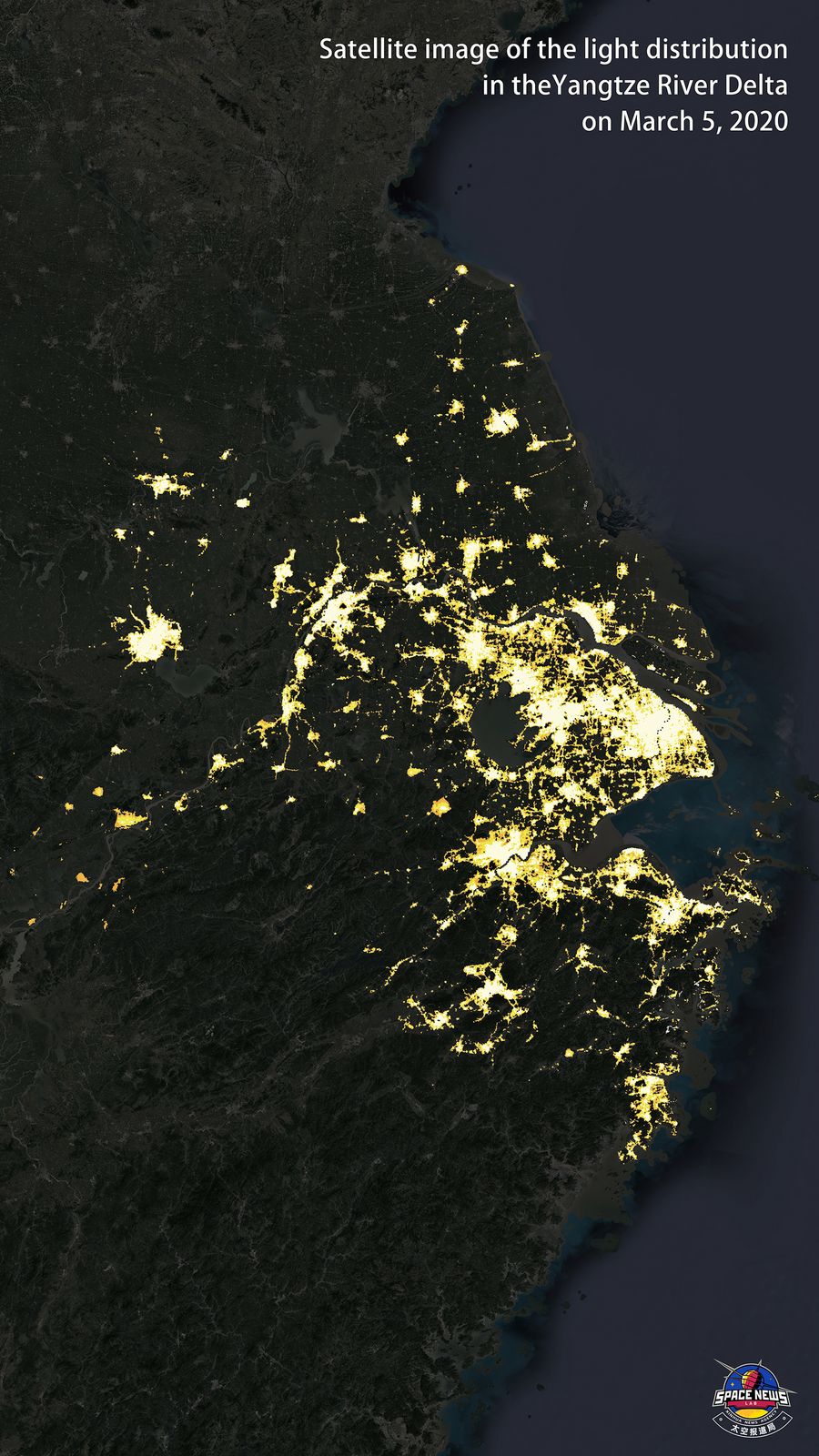
Satellite image of the light distribution in the Yangtze River Delta on March 5, 2020.
In Zhejiang province, cities of Hangzhou, Shaoxing, Yiwu, Ningbo and Taizhou also saw significant increase in light brightness, according to data from remote sensing satellites. As of March 11, nearly all major industrial enterprises in Zhejiang province had resumed work.
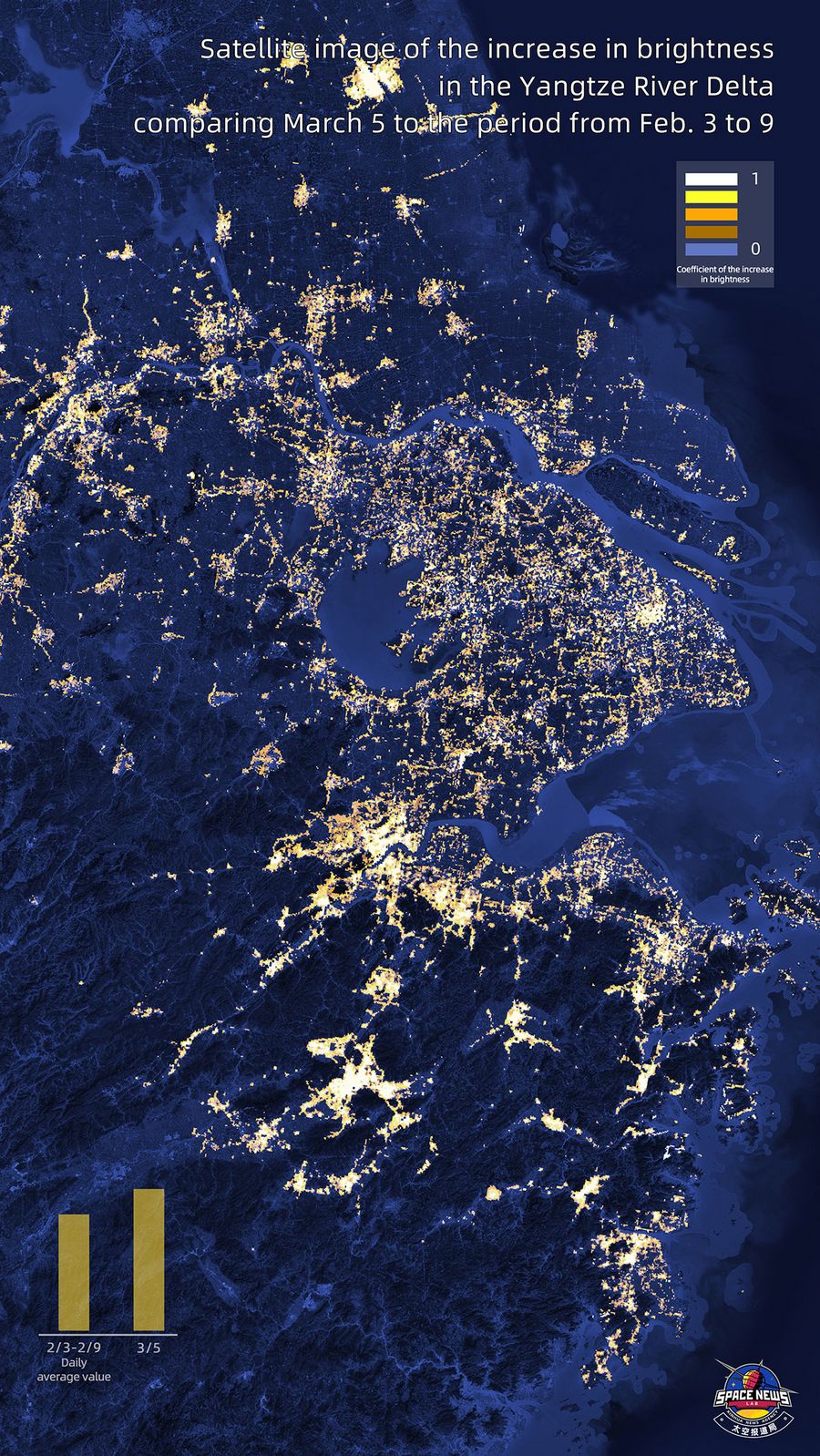
Satellite image of the increase in brightness in the Yangtze River Delta comparing March 5 to the period from Feb. 3 to 9.
BEIJING-TIANJIN-HEBEI
China initiated a key strategy in 2014 to coordinate the development of Beijing, its neighboring port city Tianjin, and Hebei Province -- a regional city cluster called "Jing-jin-ji."
The year of 2020 is a key phase for promoting the coordinated development of Beijing-Tianjin-Hebei region. Faced with the tasks of ensuring safety and stability while promoting work and production resumption, the region's epidemic prevention and control work has entered a key phase. Under the circumstances, the night-time light brightness in this region has seen notable increase by comparison to the period of the Spring Festival.
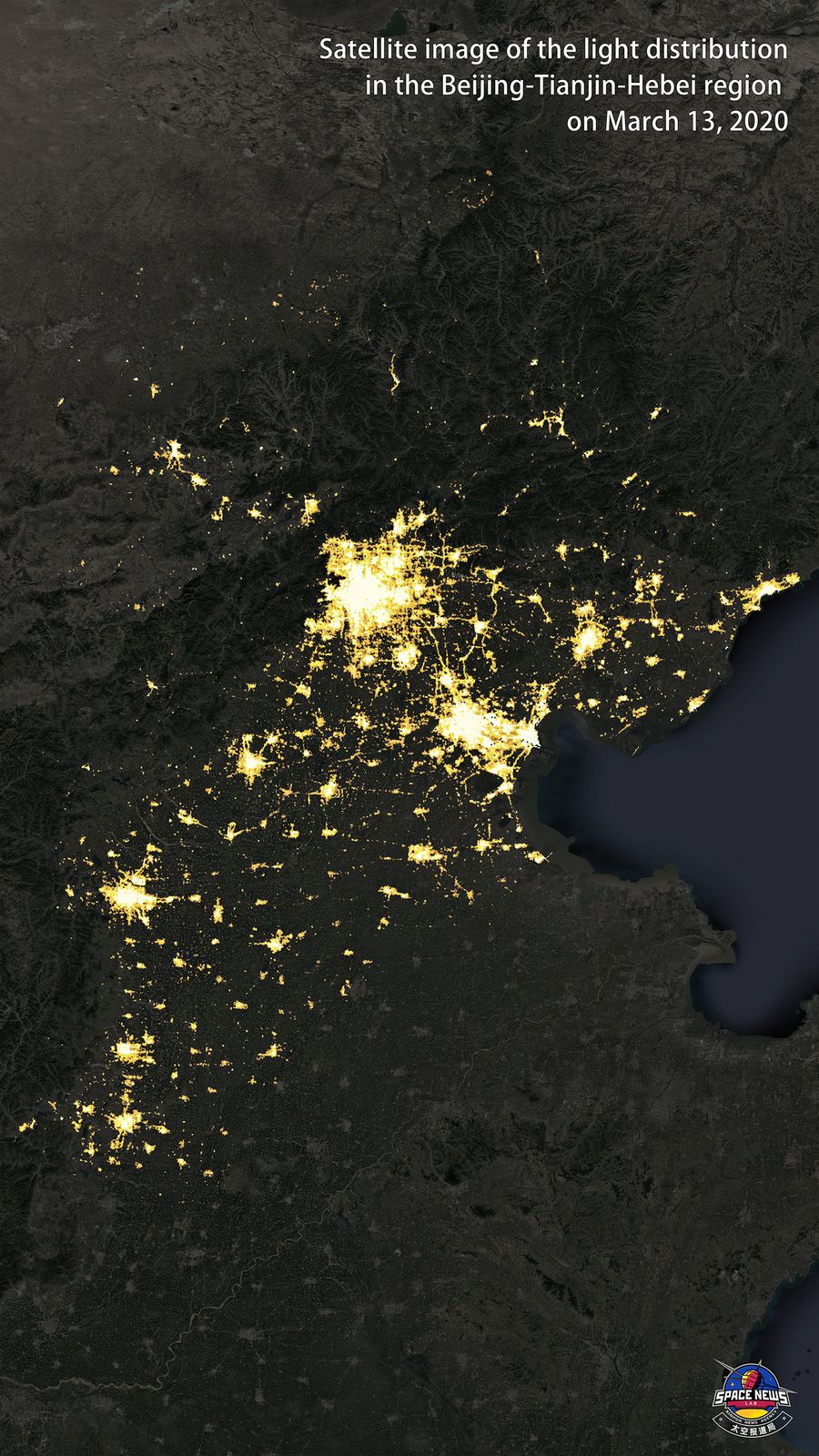
Satellite image of the light distribution in the Beijing-Tianjin-Hebei region on March 13, 2020.
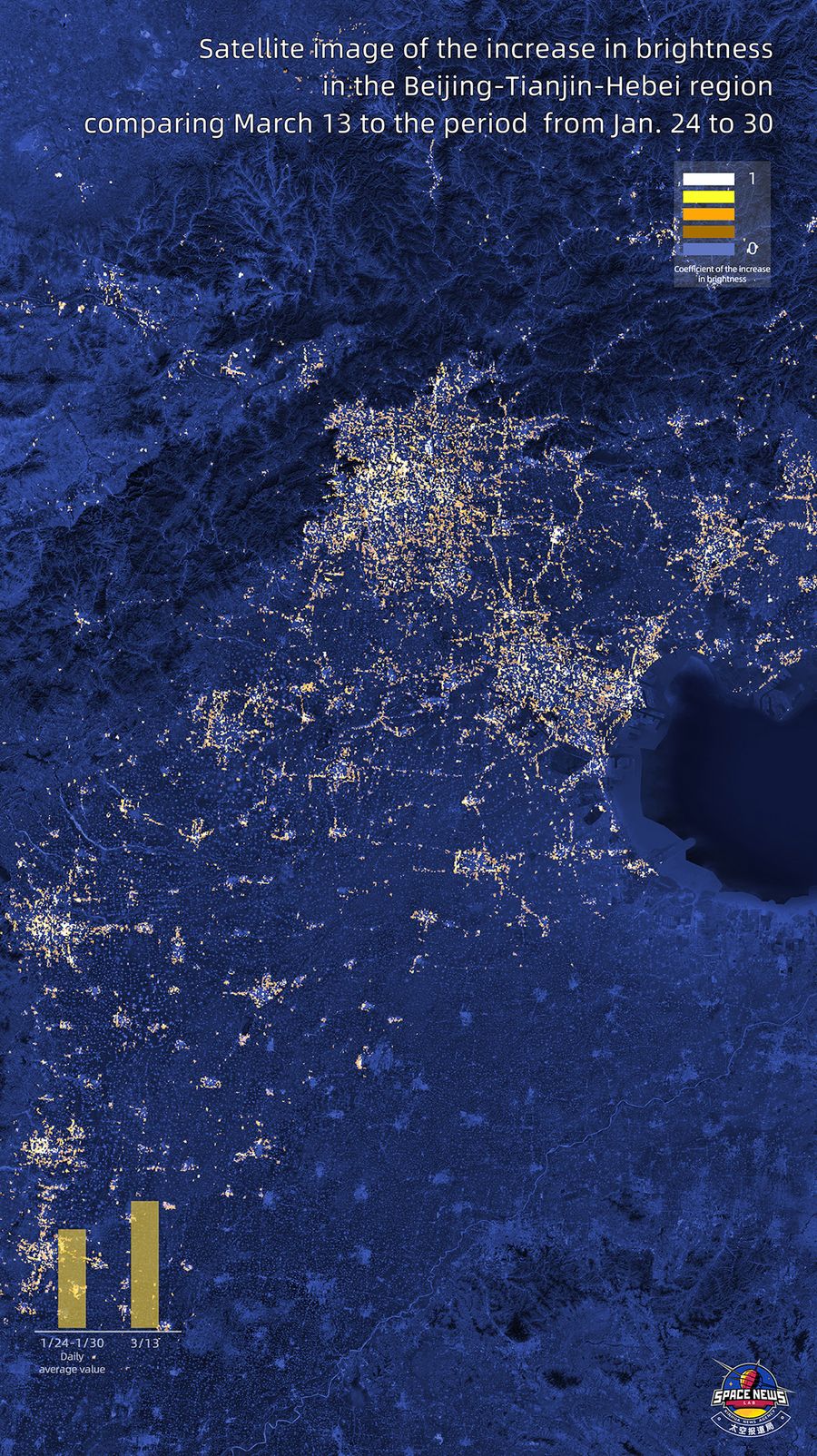
Satellite image of the increase in brightness in the Beijing-Tianjin-Hebei region comparing March 13 to the period from Jan. 24 to 30.
Remote sensing satellites can observe the light on the earth surface at night, which mainly comes from human activities in residential and industrial areas, including fishing boat lighting and fires. Light can also be quantified to measure the activity of human activities.
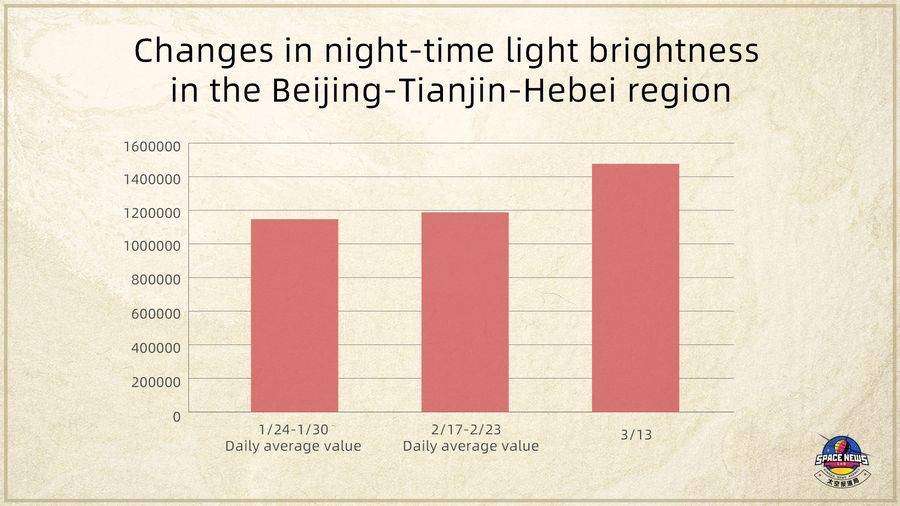
The graphics shows the changes in night-time light brightness in the Beijing-Tianjin-Hebei region during the periods of Jan. 24 to 30, Feb. 17 to 23 and on March 13.
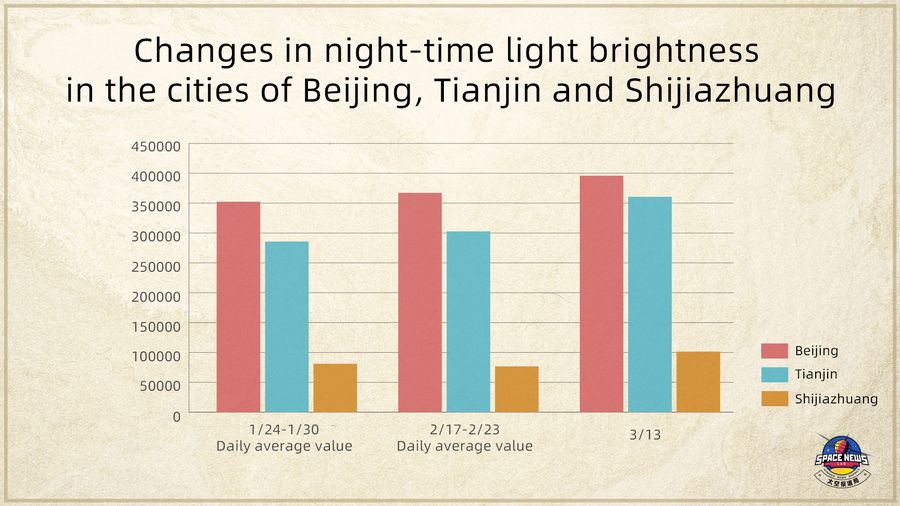
The graphics shows the changes in night-time light brightness in the cities of Beijing, Tianjin and Shijiazhuang (capital of Hebei province) during the periods of Jan. 24 to 30, Feb. 17 to 23 and on March 13.

Satellite image of part of downtown Tianjin on February 22, 2020.

Satellite image of part of downtown Beijing on February 18, 2020.
Thanks to the adoption of region-specific and differentiated approach, China is advancing toward full resumption of work and production.
According to the National Development and Reform Commission, China's top economic planner, over 90 percent of the major industrial enterprises in China's provincial-level regions except for certain areas including Hubei, once the hard-hit province of the novel coronavirus, have resumed work and production.
Regions including Zhejiang, Jiangsu, Shanghai, Shandong, Guangxi, and Chongqing almost saw nearly 100 percent of their enterprises back on production.
While the world is still facing arduous epidemic prevention and control work, China, the world's manufacturing hub, is gaining momentum in recovery. The country's recovery of production is not only of great importance for its economic growth, but also will provide support for many countries in combating the COVID-19 epidemic.
Working together, the international community will eventually win the battle against the epidemic. ■



